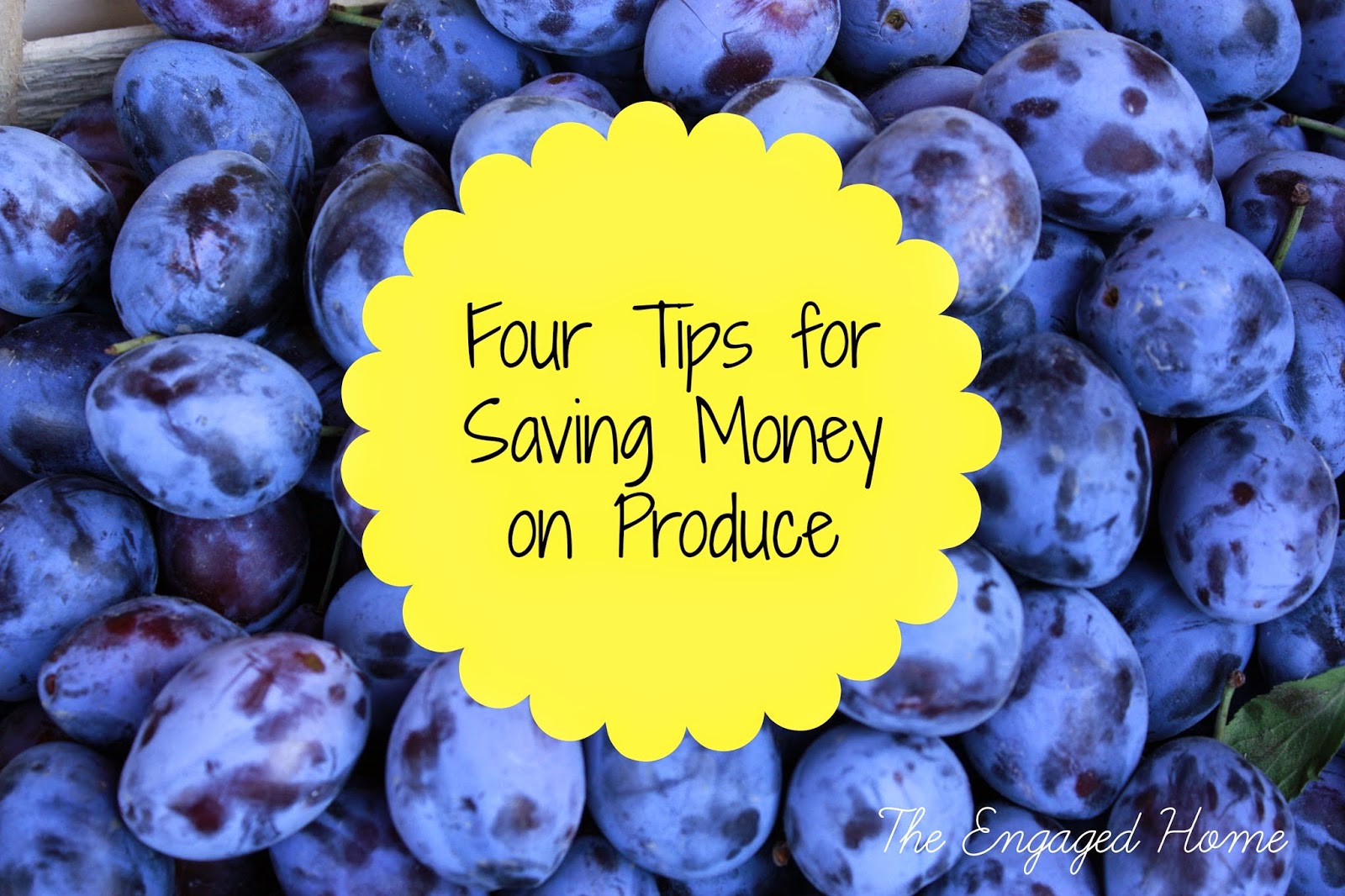A couple years ago, my husband and I woke up to the realization that we were putting a lot of heavily-processed and sugary foods into our bodies. We noticed the effects most in our weight and energy levels. I had gained an extra 20 pounds and we felt frequently fatigued. Enough was enough. It was time to invest in healthier foods and more fresh produce. But could we afford to? After all, I loved using coupons, but fresh produce coupons are hard to find!
Since married in 2010, we’d kept our grocery budget between $100-120 a month. We wondered if people living on a modest income really could afford to eat healthy. There is a reason why so many low-income families struggle with obesity: unhealthy food is often cheaper (and addicting). But we knew for the physical well-being of our family, we needed make changes. Without much wiggle room to increase our budget, we became more resourceful in how we shopped for produce.
Guess what? It worked! We changed the way we shopped and discovered ways to both make our money stretch throughout the month and eat healthy. Our budget continues to work now that I am pregnant and eating more dairy and meat than before. The biggest change we made was that we replaced many of our sugary and salty snack foods and side dishes with fresh fruits and vegetables.
How did we afford to do it? Here are some shopping tips for finding deals on fresh produce:
1. Price Match: This is probably the most obvious. Walmart will price match on produce (as long as Walmart has the same produce to buy). Janie Girl does a great job keeping you updated on price-matching deals here in Phoenix. You can also use the Walmart Savings Catcher app or website. While Walmart is not my favorite store, price matching not only saves money, it saves time. Who can put a price tag on time?
2.Market on the Move: M.O.M. is a Phoenix function that takes produce that stores will not sell and for $10 you can fill up boxes (up to a certain limit) with their weekly selection of produce. While most of it is not organic, and some may need to be used quickly, it is an affordable way to stock up on fresh produce for a couple weeks. In fact, sometimes they give you way too much, thus enabling you to share your bounty with neighbors, friends, or family. Another similar group is BountifulBaskets. For $15 you receive 6 fruit items and 6 vegetable items. They also offer a 100% certified organic basket for $25.
3. Organic/Local Community Supported Agriculture (CSA): If buying organic and local is important to you, don’t fear! There are some affordable options that allow you to buy organic, support local farmers, and not bust the budget: CSAs. LocalHarvest.org uses your location to show you what farms and CSAs options are nearby. Howa CSA works is that you buy a share for a growing season. Typically, you pay for the entire season upfront (though some will work with you and break it into installments); usually this costs $400-$600 a season, depending on location. The shares I saw in the Phoenix area ranged from $20/week-$32/week with half-shares also available through most farms. Your money supports these local farmers as they make repairs and buy seed, and in return you receive a basket or bag of their fresh produce selection each week (or every other week if you do a half-share). Within your bag each week you will receive around 7-10 types of vegetables, enough to feed a family of 2-3. Many also have the option, for a few extra dollars, to add on fresh range-free eggs and organic meats. Some have nearby drop-off locations, while others will bring the produce straight to your door. CSAs are convenient, affordable, organic, and a great way to support local farmers!
4. Gardening. Gardening may or may not be for you. There are certainly some start-up costs, as well as physical labor and time involved. However, gardening is much more affordable in the long run, and you know exactly where you food is coming from. Plus, it is fulfilling and great learning opportunity to share with your children. In Phoenix, where it rarely freezes, you can garden year-round! In other locations you have to eat the fresh produce while you have it, and do your best to preserve the rest through canning or freezing. But the good news is that it can keep your shelves stocked through the winter months to supplement your diet when stores hike up produce prices in the winter.
One final non-money related tip for shopping healthier: Avoid the aisles! Shop the perimeter of the store where the produce, dairy, and meat are located. Only go into the aisles for things you specifically need. Otherwise, you may walk out of the store with a bag of Doritos instead of bananas. ;)
Nathana Clay is a blogger who discusses faith and learning in the home. She is committed to providing inspiration and resources to families who are seeking healthy lifestyles. A teacher, poet and dedicated to her passion in ministry, you can read more from Nathana on her website, The Engaged Home.
Do you have tips on how to save on produce? What's has worked for your family? Please share in the comments section below!
Would you like to guest post on Janie Girl? Send your requests, here.



No comments:
Post a Comment